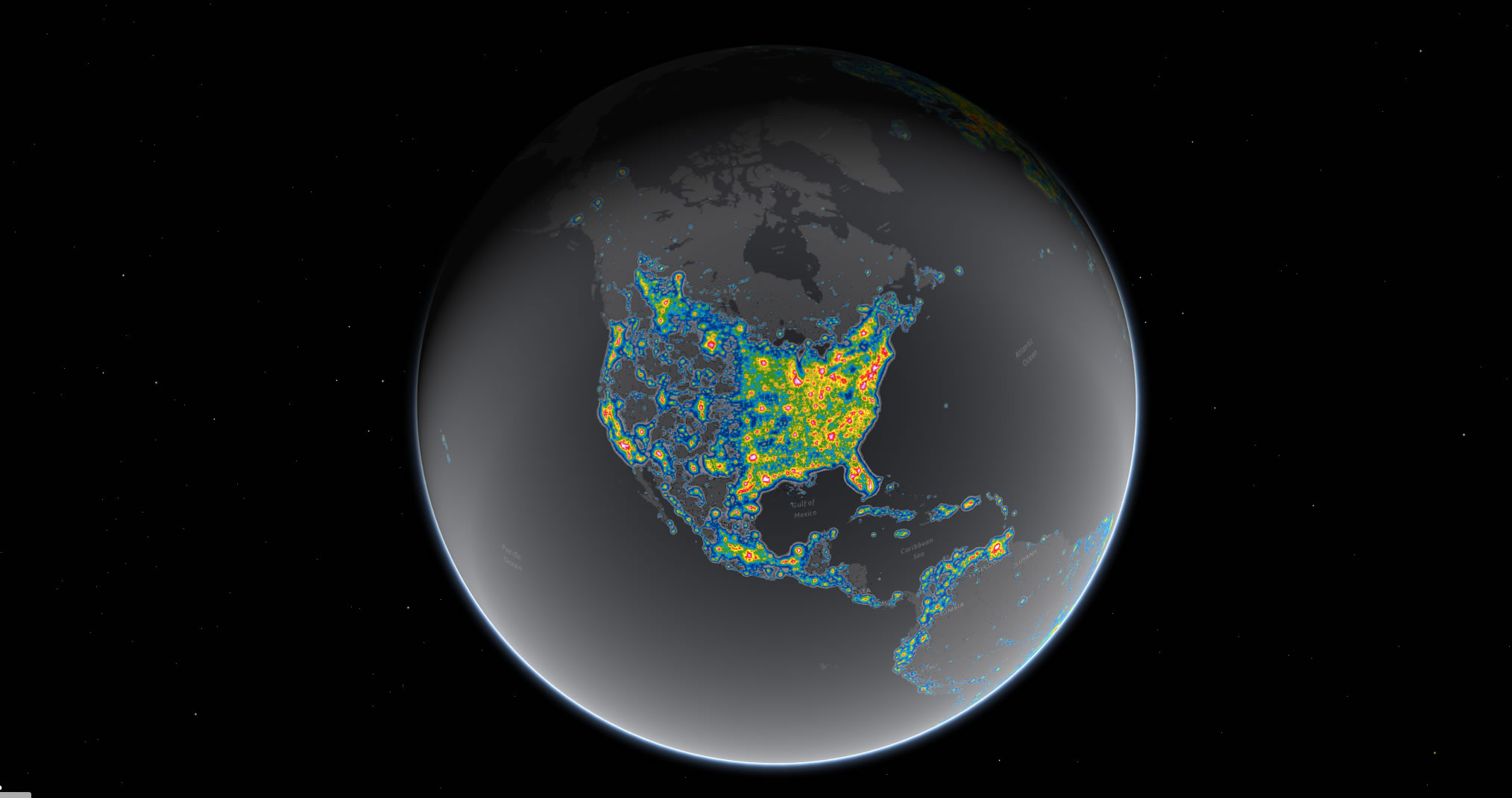News Release

Falchi et al., Science Advances; Jakob Grothe/National Park Service, Matthew Price/CIRES and CU-Boulder
News Release Date: June 10, 2016
Contact: Jeffrey Olson, 202-208-6843
Contact: Dan Duriscoe, 760-407-9810, 970-225-3503
WASHINGTON –National parks offer some of our nation's best views of the cosmos. A fundamental new work, The New World Atlas of Artificial Sky Brightness, significantly expands knowledge of light pollution and its impact on the night sky. The atlas, published today by Science Advances, is the work of an international team including National Park Service (NPS) scientist Dan Duriscoe.
"Few places on earth offer pristine dark views to the rising Milky Way and starry constellations and light pollution is a bright filter upon this vast canvas," said Duriscoe. "Verification of NPS ground measurements with satellite data from NOAA creates an accurate model for predicting night sky quality in national parks and locations around the world, which can be used to increase opportunities for park visitors and stargazers to enjoy this rare and diminishing resource."
The National Park Service Natural Sounds and Night Skies Division is viewed worldwide as a leader in the protection of dark night skies. The atlas draws on Duriscoe's seminal research and on-the-ground measurements of night sky brightness, amassed over the past decade of fieldwork in over 100 national park areas. The resulting datasets helped calibrate and corroborate data from NOAA satellite images of light scattering into the atmosphere. Duriscoe's extensive tests also provided essential data for the light pollution model, and helped establish international methods in use today for reporting the impact of artificial light on natural environments.
The atlas project was led by principal investigator Fabio Falchi with Light Pollution Science and Technology Institute (ISTIL, Italy), and with additional expertise from Duriscoe, the National Oceanic and Atmospheric Administration (NOAA, USA),Deutsches GeoForschungsZentrum (GFZ, Germany), and University of Haifa (Israel).
Duriscoe said, "With the loss of dark sky views, the ancestral stories of celestial phenomena that so richly express our connection to these orbiting bodies are all but forgotten. And this is more than a matter of nostalgia. Humans need opportunities for wonderment and contemplation of the universe, and animals need darkness for protection, navigation, nesting and predation."
The darkest places in the United States are in the Colorado Plateau, a region of the Southwest covering parts of Utah, Colorado, New Mexico and Arizona. National parks in this area include Capital Reef, Mesa Verde, Arches and Canyonlands. Of the western European countries, Scotland, Sweden and Norway remain among the darkest locations. Singapore, Qatar, Kuwait and United Arab Emirates are among the most light-polluted countries in the world.
The New World Atlas model provides a compelling illustration that sky glow extends large distances from cities, and offers a tool for National Parks to work in partnership with all stakeholders to pursue restoration of night skies. Industries and individuals alike can also do their part to minimize light pollution by adopting simple solutions, such as switching to shielded fixtures that direct light downward instead of into the surroundings, and using amber, or warm colored bulbs, instead of cool blue LEDs, which amplify sky brightness two to three times above the typical output.According to Duriscoe, "Even one of these changes can make a difference in the palette of night."
Full Caption: Light pollution now blots out the Milky Way for eight in ten Americans. Bright areas on this map show where the sky glow from artificial lighting blots out the stars and constellations. An international team of researchers has released the new World Atlas of Artificial Sky Brightness, in a paper published in Science Advances today. An interactive version of this map and data download instructions are here.
About the National Park Service. More than 20,000 National Park Service employees care for America's 411 national parks and work with communities across the nation to help preserve local history and create close-to-home recreational opportunities. Visit us at www.nps.gov, on Facebook, Twitter, and YouTube.
Last updated: June 10, 2016
